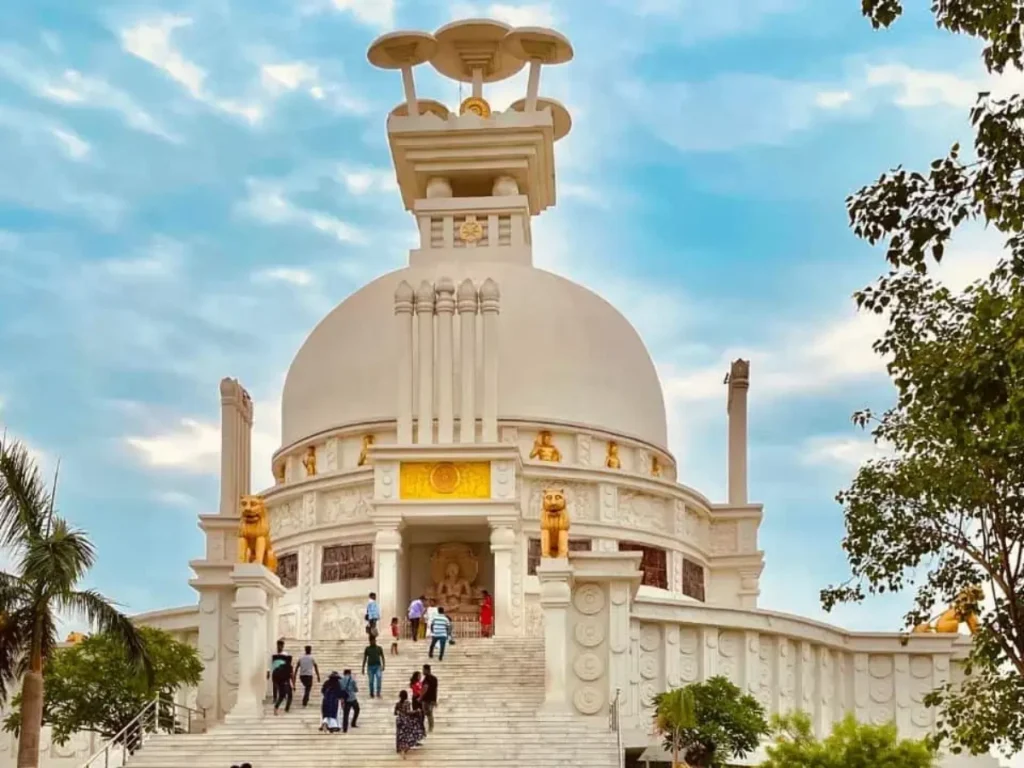Those of us who still remember school level Dhauligiri history may recall that once upon a time in the ancient past, India was not a united country but a collection of feuding territories and kingdoms. From this chaos rose the Maurya Empire. Headed by the founder Chandragupta Maurya, this empire united the various quarrelling kingdoms into a cohesive territory. It was his grandson however, who contributed the most to this empire. At its height the Maurya Empire encompassed the whole of present day India, Afghanistan, Pakistan and Bangladesh except North-East India and some parts of South India. Most of this was conquered by Chandragupta.
However, history would know Ashoka as ‘The Great’ not for his conquest of Kalinga but for his philanthropy. He was the foremost proponent of Buddhism and nonviolence. But how did this change from bloodthirsty conqueror to devout Buddhist come from?
Lets go back to the past to about 260 BCE. At the time Ashoka was waging war on Kalinga. The warzone was the Dhauligiri hills just outside present day Bhubaneshwar by the side of the Daya river. You have to remember that ancient warfare did not involve armies beating each other bloody. There were very little professional soldiers. Most of the soldiers were farmers who had been pressed into service but had little experience. If an army lost enough soldiers, the rest would rout and the battle would be lost by their side.
However, Kalinga was in this war for its existence. So the whole of Kalinga turned into a battlefield. It would become the bloodiest and most violent war ever fought in ancient India. According to Ashoka’s Edict XIII, 100,000 on Kalinga’s side were killed and an equivalent number from Ashoka’s side. Many more died of other causes like disease and famine. 150,000 were deported. It is said that the battle of Dhauli was so bloody that the river Daya bled red with blood.

Ashoka was horrified at the look of the battlefield. He vowed to never fight a war again and embraced Buddhism. Afterwards he commissioned a series of works on Dhauligiri to show his commitment to non-violence. It is these stupas, pillars and edicts that we can see scattered around Dhauli.
In the 1970s, the Japan Buddha Sangha and the Kalinga Nippon Buddha Sangha built the white coloured Shanti Stupa. Located on top of the hill, this structure looks over all of the adjoining valleys and hills and can be seen from quite far away. Currently it plays host to a sound and light show every evening.
You can read our another post on Progress of Bee Keeping in Odisha
There is also an ancient Shiva Temple on the hill which is quite popular with devotees at Shivaratri. Observation points have built along the river side so that visitor can enjoy the scenery in comfort.
To sum it up Ashoka lost his violent nature and arrogance on the shores on the Daya river and turned from Chandashoka to Dharmashoka. In this he gained the wisdom to build up his kingdom into a prosperous empire that is admired even today.
We had stopped here on the way from Puri to Bhubaneshwar and sadly did not have much time to photograph the various Ashokan pillars and edicts around the place. We hope that we’ll once again be able to go there and document all those things we missed the first time around.
Dhauligiri
Where Ashoka Lost and Won” sheds light on Ashoka’s transformation from a ruthless conqueror to a compassionate ruler, known for his edicts advocating non-violence and religious tolerance. It delves deep into the moral dilemmas he faced, the introspection that followed the battle, and the remarkable policies he implemented for the welfare of his people.
The book also highlights the architectural wonders of Dhauli, including the iconic Shanti Stupa, which stands as a symbol of peace and universal harmony. It explores the religious and cultural significance of Dhauli, drawing readers into the sacred ambiance of this historical site.
Dhauligiri: Where Ashoka Lost and Won” not only narrates a gripping historical account but also invites readers to reflect on the complexities of war, the power of transformation, and the enduring relevance of Ashoka’s principles in today’s world. It is a tribute to the profound wisdom and teachings imparted by one of India’s greatest emperors.
More: Wanted to download Odishashop.com visit here




